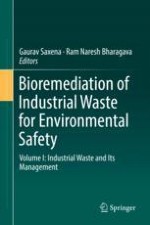2020 | OriginalPaper | Chapter
2. Bioremediation: An Eco-friendly Sustainable Technology for Environmental Management
Authors : Christopher Chibueze Azubuike, Chioma Blaise Chikere, Gideon Chijioke Okpokwasili
Published in: Bioremediation of Industrial Waste for Environmental Safety
Publisher: Springer Singapore
Activate our intelligent search to find suitable subject content or patents.
Select sections of text to find matching patents with Artificial Intelligence. powered by
Select sections of text to find additional relevant content using AI-assisted search. powered by
